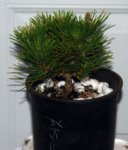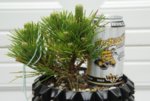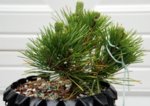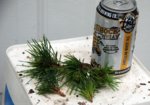James W.
Chumono
I purchased this 3 yr old graft from Brent at Evergreen Gardenworks. (Nice healthy tree, thank you, Brent)
I repotted into my bonsai mix and it is growing well.
As is typical (I understand) for this variety of dwarf JBP, it thinks it is a mugo pine with a wad of branches all coming out from the same spot. I intend to grow this for several years before getting serious about styling it and want to develop a bit of a trunk. I understand that this tree will have special challenges, maybe not an ideal choice for bonsai.
The questions are:
When can I prune out superfluous branches?
How many can I remove at a time?
Do I need to leave stubs?
Do I need to reduce branches before removing them to preserve life lines?
I am intending on using sacrifice branches, will this a good method for a dwarf variety?
Pictures: as received, current and close up



I repotted into my bonsai mix and it is growing well.
As is typical (I understand) for this variety of dwarf JBP, it thinks it is a mugo pine with a wad of branches all coming out from the same spot. I intend to grow this for several years before getting serious about styling it and want to develop a bit of a trunk. I understand that this tree will have special challenges, maybe not an ideal choice for bonsai.
The questions are:
When can I prune out superfluous branches?
How many can I remove at a time?
Do I need to leave stubs?
Do I need to reduce branches before removing them to preserve life lines?
I am intending on using sacrifice branches, will this a good method for a dwarf variety?
Pictures: as received, current and close up










